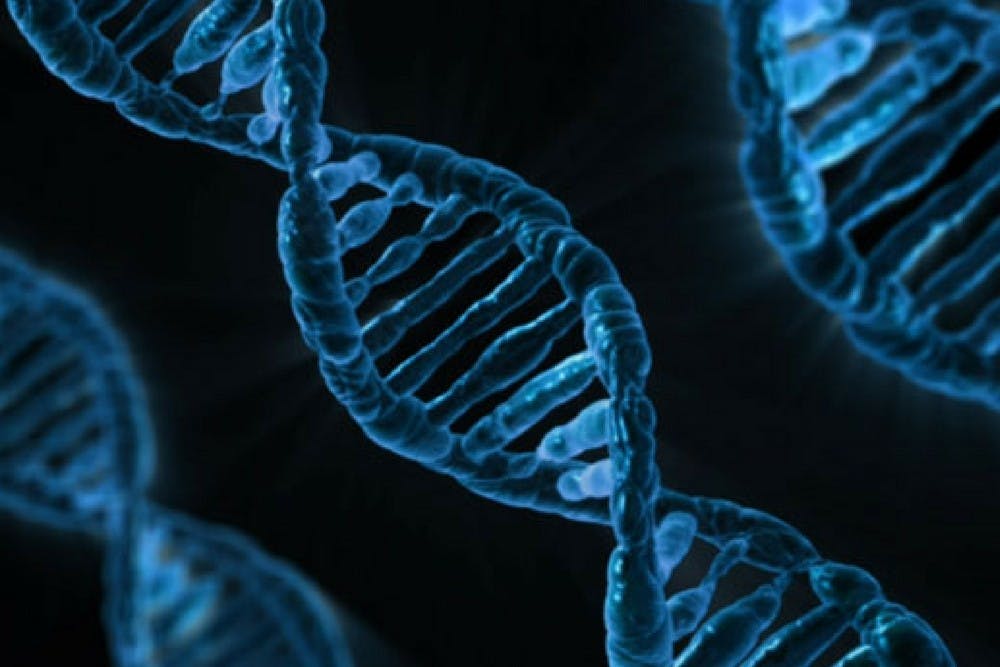Nine out of 10 people have a cancer-causing virus lurking in their DNA. Although most people never feel any ill effects from the virus, a new paper explores how it can become life-threatening.
Published in the open access journal eLife, the paper written by a team of researchers from the Duke School of Medicine details how the Epstein-Barr virus (EBV) is able to hide in the human genome. Although EBV becomes active in just a small percentage of its carriers, the virus can transform normal cells of the lymph nodes into malignant tumor cells of various types of cancer, including Hodgkin's or non-Hodgkin's lymphomas.
"[EBV] doesn't really become an issue until your immune system is compromised," said Joanne Dai, a graduate student and one of the authors of the paper. "For a lot of people who have HIV, AIDS, or are undergoing a transplant, the immune system is suppressed, the virus can become reactivated, and at that point it leads to the possibility of driving tumorigenesis."
For most people, EBV lives harmlessly within the immune system's B cells, which are a type of white blood cell responsible for recognizing and responding to foreign invaders. But activation of EBV leads to the production of proteins that suppress cell death, an integral part of a cell's life cycle. Lack of cell death can result in an accumulation of rapidly growing, unregulated cells and eventually, tumor growth.
The researchers set out to discover the proteins responsible for preventing cell death in EBV-infected cells. While previous research had identified the protein LMP1 as a possible candidate, new evidence showed that even cells with low levels of LMP1 could be resistant to death. This new evidence suggested that there may be more at play in the suppression of cell death.
Thus, the team enlisted then-graduate student Peter Winter to discover other potential factors affecting cell death using a technique known as BH3 profiling. This method allows researchers to determine how close a cell is to its death.
"BH3 profiling can measure the overall ‘priming’ of the cells for apoptosis (that is, the cell's distance from the apoptotic threshold)," the paper says.
Winter compared BH3 profiling to a ball on a cliff—if the ball is close to the edge of the cliff, or close to cell death, treatments such as chemotherapy will be enough to nudge the ball over the cliff, or engineer cell death so that the tumor can shrink. A ball that is too far away from the cliff, however, will not respond as well to these treatments. This allows doctors to determine how well an individual will respond to different treatments by observing the cells of the tumor.
Using this method, the team was able to identify EBNA3A as the key protein that hinders apoptosis—or cell death—in EBV-infected cells. Winter explained that the study's findings indicated that other processes are also at work in these cells as opposed to normal cells.
"Instead of being reliant on one type of molecule to keep [the virus] protected from [cell death], now this virus hijacks the normal machinery and causes a new dependency on a different anti-apoptotic protein," Winter said.
Understanding this shifting chemical dependency helps to reveal the complexities of EBV-associated cancers, which are typically more difficult to treat than other cancers. Identifying the proteins that prevent the death of cells also helps explain why certain treatments and antibiotics, like ABT-737— which has been used effectively to treat some lymphomas and some lung cancers—are ineffective.
"[These findings] could pave the way for better treatments where you're able to specifically target the cancer [and harmful proteins], with fewer off-targets that can harm the patient and harm healthy tissue," Dai noted.
Get The Chronicle straight to your inbox
Signup for our weekly newsletter. Cancel at any time.

